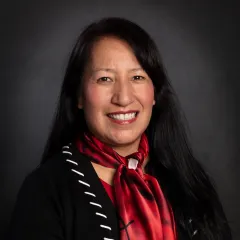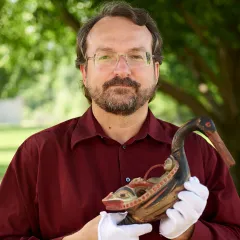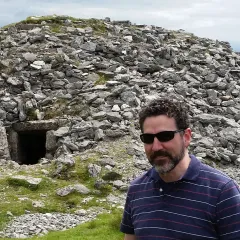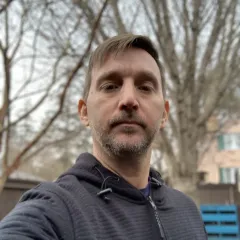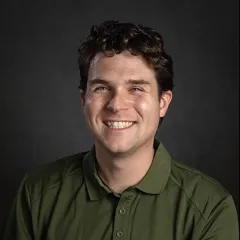Repatriation Office (original) (raw)
- Home
- Our Research
- Anthropology
- Programs
- Repatriation Office
Repatriation at the Smithsonian Institution, National Museum of Natural History (NMNH), is a collaborative process in which Museum staff work with Native American, Alaska Native and Native Hawaiian tribal representatives to determine the disposition of human remains and cultural objects under the repatriation provisions of the NMAI Act. You may search the entire Smithsonian Institution digital collections database, and the collections of the National Museum of Natural History.
Visit the Repatriation Review Committee website to contact committee members and for other information.
Repatriation is the process by which museums and other institutions transfer possession and control of Native American, Alaska Native and Native Hawaiian human remains, funerary objects, objects of cultural patrimony and sacred objects back to the tribes of origin. For the museums that comprise the Smithsonian Institution, the National Museum of the American Indian Act (NMAI Act), passed in 1989 and amended in 1996, governs repatriation. The Native American Graves Protection and Repatriation Act (NAGPRA), passed in 1990, directs repatriation for other U.S. institutions that receive federal funding.
The Repatriation Office was established in 1991 to implement the statutory requirements of the NMAI Act. This law and its amendment assert the right of Native American, Alaska Native and Native Hawaiian peoples to determine the disposition of culturally affiliated human remains, funerary objects, sacred objects, and objects of cultural patrimony currently in the collections of the Smithsonian Institution. Our policy also directs us to consider requests for the repatriation of the remains of Native American individuals whose identity is known, and objects acquired illegally.
The Legacy of Repatriation
The museum maintains its anthropological collections and exhibits in order to cultivate understanding of and respect for cultures throughout the world, including those indigenous to the United States. While repatriation can be a relatively simple process resulting in the physical return of human remains and objects, it can also be the first step in establishing a close working relationship between Native peoples and the museum.
The Repatriation Office is located on the National Mall, in the National Museum of Natural History building. Tribes are encouraged to consider sending representatives to visit the museum to discuss repatriation matters. These consultation visits can be funded through travel grants from the Repatriation Review Committee. Please see our Guidelines and Procedures.
Much of the Native American objects and remains now held by the museum were collected as a part of archaeological excavations or anthropological expeditions around the U.S. or transferred to the Smithsonian from other institutions, such as the former U.S. Army Medical Museum. A small number of human remains were collected by private individuals, and large numbers of ethnographic objects were acquired from Native people throughout the 19th and 20th centuries by private collectors and Smithsonian anthropologists.
For definitions of the categories of materials subject to repatriation, the National Museum of Natural History Repatriation Office has developed detailed policy and procedures for the implementation of the National Museum of the American Indian Act. Please see our Guidelines and Procedures.
An Indian tribe or Native Hawaiian organization may initiate a request for the repatriation of human remains and/or associated funerary objects, previously identified as culturally unaffiliated, by making a written request for their return. Please see the NMNH policy on culturally unaffiliated human remains and associated funerary objects.
Communication and collaboration with Native groups is the foundation of the repatriation process at the National Museum of Natural History. A consultation visit normally consists of a meeting to discuss repatriation issues, the progress of a pending repatriation case, an orientation to the documentation procedure, and an examination of the collections. Every consultation visit is different according to the needs and interests of the visitors, and we can develop an agenda specific to the needs of the visiting group.
Travel Grants
A Repatriation Review Committee consultation travel grant may cover transportation, hotel accommodations, meal allowance, and local travel, normally for two tribal representatives. Please see our Guidelines and Procedures, download the two Travel Grant forms, the Consultation Travel Grant Application Form and the Invitational Travel Enrollment Form, and then contact one of the Repatriation Office staff listed below.
The National Museum of Natural History (NMNH) distributed two reports to federally recognized Native American communities, Alaskan Native Corporations and Native Hawaiian organizations. The first report in 1997 summarized all Native American ethnological objects in the collections of the NMNH. The second report in 1998 was an inventory of all Native American human remains and archaeological objects held by the NMNH.
The Repatriation Office at the NMNH is also producing a series of cultural affiliation reports in response to repatriation claims. Abstracts of these reports accomplished since 1991 are available below, arranged by geographic region. Download the PDF of interest and either browse the document or use the keyword search in your PDF viewer. Tribes may request complete versions of reports by contacting the Repatriation Office.
Are copies of completed repatriation reports available? Yes. All federally recognized tribes received copies of ethnology summary reports in 1996 and inventories of archaeological and human remains collections in 1998. Copies of completed repatriation case reports may also be requested, see Repatriation Office staff contact information below.
How does my tribe make a repatriation claim? It is best to contact the Tribal Liaison responsible for your region, see our staff contacts below. The repatriation process is part of a government-to-government relationship, so the formal request for repatriation must come from a recognized tribal official and be on the official letterhead. A tribe may request repatriation of specific human remains or objects from a specific site or region, or request those remains and objects that can be affiliated to them regardless of their locality of origin. Please see our Guidelines and Procedures.
What is a Traditional Care Request? Collections care emphasizes the protection and preservation of museum items. The National Museum of Natural History (NMNH) recognizes that Native Americans and other peoples have their own traditional perspectives of how cultural objects should be stored, handled and cared for, and is open to including these approaches. Traditional care that does not conflict with museum policies can be merged to achieve both state of the art and traditional standards.
What other Native American resources are available at the NMNH and in Washington D.C? The NMNH is also home to several programs that work closely with Native American communities: Recovering Voices, Arctic Studies Center, the American Indian program, and the National Anthropological Archives which houses photographs and documents relating to Native peoples. Also in D.C. is the National Museum of the American Indian, the National Museum of American History, the Smithsonian Center for Folklife and Cultural Heritage, the Library of Congress’ American Folklife Center, and the National Archives have Native American collections, archives and recordings.
Does the Repatriation Office and NMNH offer internships and research opportunities for Native Americans? Yes. A wide range of opportunities are available for Native Americans interested in working with the museum. Volunteers and unfunded internships supporting the activities of the Repatriation Office can be arranged by contacting our staff. Funded internships are available for Native American college students through the Smithsonian's Office of Fellowships. A Short-Term Visitor Program is also available to support in-residence study oriented visits by community scholars to the Smithsonian Institution. The purpose of the Short-Term Visitor award is to defray the costs of travel to the Smithsonian facility and expenses during the visit, for a maximum of 21 to 30 days. Please contact Repatriation Office staff for further details and eligibility.
Contact Repatriation Office Staff
Dorothy Lippert
Program Manager, Repatriation
Anthropology
Eric Hollinger
Tribal Liaison, Repatriation
Anthropology
Chris Dudar
Osteology Lab Manager (Repatriation)
Anthropology
Marissa Shaver
Tribal Liaison, Repatriation
Anthropology
Matthew Sanger
Tribal Liaison, Repatriation
Anthropology
Kevin Pierce Wright
Tribal Liaison, Repatriation
Anthropology
